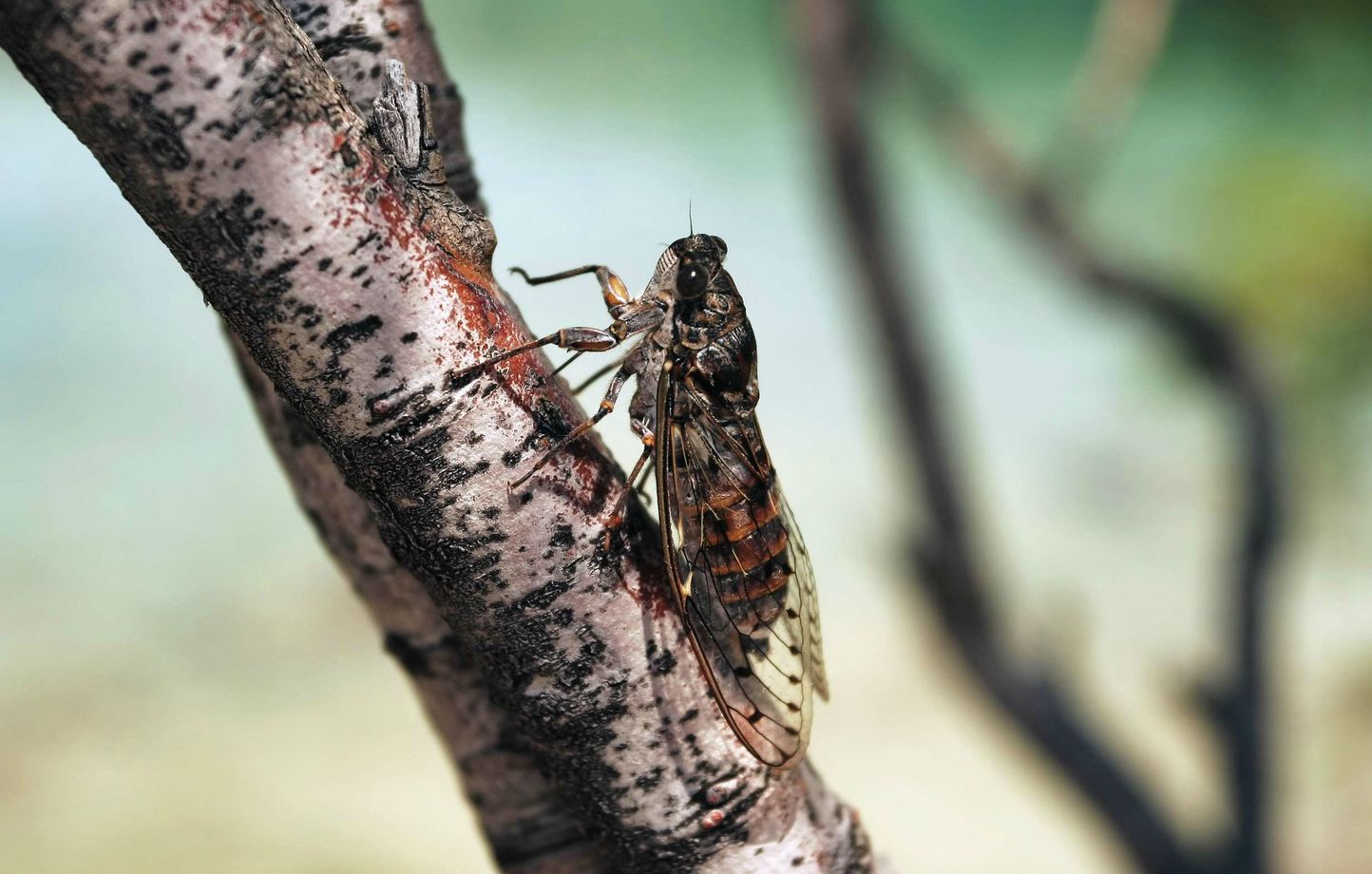
Billions of cicadas will invade the south and center of the country
Egypt has locusts, and the United States has cicadas. Billions of cicadas, noisy and ready to mate, are preparing to invade America's forests and suburban suburbs. In the coming weeks, two specific groups of cicadas will frolic at the same time. This is a phenomenon that has not occurred since 1803, when Thomas Jefferson was still president and the United States purchased the state of Louisiana from France.
The cicada family includes more than 3,000 species of insects around the world. Most of them spend their lives underground, in the form of larvae. They emerge as adults to molt and reproduce. Some appear every year, while others, called “periodic” cicadas, appear every 13 or 17 years.
Convergence of two phenomena
The phenomenon this year includes two groups of cicadas: the nineteenth group, which appears every 13 years, and has already begun to appear in North and South Carolina (southeastern United States). It will be followed by the 13th group in the Midwest, which appears every 17 years. In central (northern) Illinois, both can be found in the same place.
“When they surface, they do so in large numbers, which piques the interest of parents and children,” says entomologist Gene Kritsky, of Mount Saint Joseph University, who has developed an app so everyone can collect data on these red-eyed creatures.
A phenomenon we remember, and whose stories we pass on from generation to generation. Just like, for example, watching an eclipse.
Consequences for animals and plants
Without much defence, the “periodic” cicadas rely on their numbers for the survival of the species: thanks to the hordes that are increasing at the same time, birds, foxes, raccoons, turtles and other predators are quickly satiated, he explains to AFP. John Lyell, professor of biology at George Washington University.
In a study recently published in the journal Science, John Lyell and his colleagues showed that a group of cicadas that appeared in Washington in 2021 led to an increase in the number of caterpillars migrated by birds, which were concentrated on the cicadas.
The result: increased consumption of young oak shoots.
Potential environmental impacts
Other research shows that the years when oak trees produce the most acorns always come two years after the cicadas emerge. The more acorns there are, and the more mammals that feed on them, the greater the risk of Lyme disease in humans.
John Lyell adds that this phenomenon “shows that there are potential long-term ecological impacts that reverberate for years after the cicada emerges.”
Then there is the single, shrill sound of male cicadas mating. “We have received several calls regarding a sound similar to a siren, howling or roaring,” the Newberry Police Office in South Carolina (southeast) said on Facebook this week.
Climate change disrupts their natural cycle
According to Chris Simon, a researcher at the University of Connecticut, climate change is disrupting cicadas' internal clocks.
With global warming in the United States, lengthening the plants' growing season provides more food and accelerates cicada growth. “I expect that more 17-year-old cicadas will turn into 13-year-old cicadas, and eventually this trait will be genetically assimilated,” she said.
It is unclear what this means for the species in the long term. Likewise, says John Lyell, to see what effect, positive or negative, the transformation of the land since colonial times has had on cicadas.
On the one hand, many historic species have disappeared due to deforestation, but those that remain thrive in suburban environs that provide ideal conditions for females to lay their eggs.

“Incurable web evangelist. Hipster-friendly gamer. Award-winning entrepreneur. Falls down a lot.”
